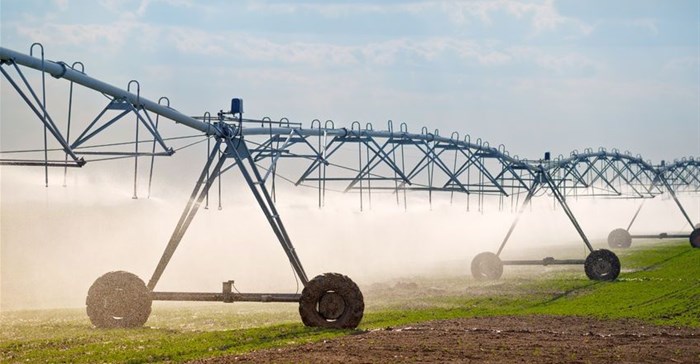The South African agricultural sector has been facing severe headwinds over the past few years. It came in the form of policy uncertainty, drought in large parts of the country, devastating disease outbreaks, infrastructure constraints and persistent non-tariff barriers and other trade-related problems.

©Igor Stevanovic via
123RFHowever, the industry is learning to dance with the wind, rather than fighting it. It remains resilient despite these major challenges and limitations.
The sector’s Gross Domestic Product (GDP) contribution since the ’70s has been declining consistently from around 8.9% in 1975 to 2.6% in 2017. This is not because agriculture has not been performing; it is just that other sectors in the economy have been performing better.
The gross value of agricultural production was close to R267bn in the 2016-'17 financial years. Livestock contributed R127bn (47%), horticulture R74bn (28%) and field crops such as maize, wheat, sunflower seed and soya-beans represented 25% (R66bn) of total agricultural production.
In March 2019, food inflation remained subdued at around 2.3%. However, cost pressures (higher fuel prices and electricity tariffs), and concerns about early frost in the maize producing areas may impact inflation negatively.
Last year the country, and particularly the agricultural sector, experienced a year of disaster and misfortune. According to the Agricultural Business Chamber of South Africa (Agbiz), farmers were despondent. Land reform (expropriation without compensation), climate variability, policy uncertainty and the listeria crisis knocked investor and business confidence.
The climate
South Africa is highly stressed in terms of its water resources. For the past six years, the country has been plagued by drought in one part or the other. Besides the drought, the mining sector has been encroaching and good arable land is being lost for farming.
The country is facing increased water pollution which will impact on our food exports if we cannot meet export requirements for minimal residues in our produce.
The destruction of our wetlands is another major headwind blowing across the country. Agricultural activities, amongst others, severely affected and dramatically altered South Africa’s landscapes over the past few centuries – as stated by the department of environmental affairs.
Studies in several areas have suggested that between 35% and 60% of our wetlands have already been lost or severely degraded.
Diseases
The pork industry experienced the greatest challenge in its history last year. A listeria outbreak killing more than 200 people was followed by an outbreak of African Swine Fever, a severe haemorrhagic disease of pigs, in the Northern Cape. It shattered the industry’s supply chain.
During the listeria crisis some producers were losing R1.2m per day. According to the South African Pork Producers’ Organisation (Sappo), the price of pork came down from R28/kg (some farmers were receiving R36/kg) to R10/kg in some instances. This resulted in several smaller farmers to exit the industry.
And then the new year dawned with news of a foot and mouth outbreak in the Vhembe District of Limpopo. This resulted in the World Organisation for Animal Health (OIE) temporarily suspending SA’s foot and mouth disease-free zone status, which not only affected the export of meat, but also products such as wool.
The non-tariff barriers
The ban on wool-products following the outbreak of foot and mouth disease in January is but one of the non-tariff barriers SA is battling.
Our tariff system is well developed and in place, but the issue of non-tariff barriers remains, according to Agbiz. The Department of Trade and Industry has been engaging with the European Union on their possible limitations on the export of SA’s fruits and citrus because of false codling moth and citrus black spot.
It is a longwinded process to fight these barriers, hence countries, especially developed ones, get away with applying them.
Learning to dance with the wind
Rest assured, the country will once again experience drought, disease outbreaks and policy uncertainty, amongst other challenges. However, for agriculture to continue being resilient, it is essential that we learn how to dance with them.
SA is exploring new markets, and has for the first time exported a shipment of soya-beans to Turkey to see if it was viable. SA is also talking to China to import maize and soya-beans from SA.
According to Grain SA, the grain industry has a record-breaking year. Maize consumption reached record highs, and the market is absorbing production. Another record was soya-bean consumption, which increased by 472% last year, albeit from a low base since 2000.
Government has given soft loans to encourage increased capacity to crush the beans to produce oil, mainly for cooking purposes, and several crushing plants have been set up in the rural areas, of which all are in full production.
Our statistics shows that hectares under soya-beans have increased 376% in the last decade due to better cooperation between the private sector and Government. Production is up by 450% over the same period.
Another new record was the consumption of sunflower seed – the highest since 1998 - as well as for wheat used in the making of bread with consumption up 30% over the same period.
Crop yields have increased despite a decline in the number of planted hectares. New technology in terms of drought-resistant, disease-resistant varieties, irrigation water saving techniques and changes in livestock breeding and feeding have shown that the industry is getting lighter on its feet.





























